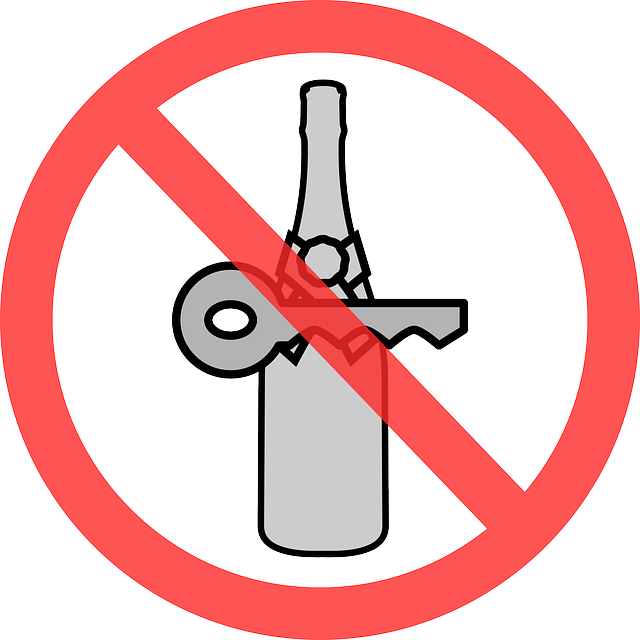High-risk reoffenders pose a significant challenge to global criminal justice systems due to mental health issues, substance abuse, and traumatic backgrounds contributing to recidivism. Community Service as Punishment (CSP) offers an alternative to incarceration, focusing on rehabilitation and reintegration through community involvement. Effective CSP requires tailored interventions, resource access, and collaboration between communities and correction facilities. Research shows CSP can lower recidivism rates, deter criminal behavior, and promote positive community connections. Comprehensive strategies including mental health services, substance abuse treatment, job training, case management, mentorship, and structured programs are crucial for successful reintegration and breaking the cycle of reoffending.
High-risk reoffenders pose a complex challenge for justice systems worldwide. This article delves into strategies to break the cycle of recidivism, focusing on community service as an alternative to traditional punishment. We explore the shift from isolated justice to community-based approaches, examining their impact on offender rehabilitation and reducing repeat offenses. Through understanding the dynamics of high-risk individuals, we’ll uncover best practices for designing effective community service programs, fostering engagement, and ultimately lowering recidivism rates.
- Understanding High-Risk Reoffenders: A Complex Issue
- Traditional Justice vs. Community Service Approach
- Designing Effective Community Service Programs
- Engaging Offenders: Incentives and Accountability
- The Impact on Recidivism Rates: Research Findings
- Best Practices for Successful Reintegration
Understanding High-Risk Reoffenders: A Complex Issue

High-risk reoffenders, often characterized by a history of serious crimes and a higher likelihood of recidivism, pose a complex challenge for criminal justice systems worldwide. Understanding this demographic is crucial in devising effective strategies to break the cycle of crime and promote rehabilitation. These individuals typically exhibit underlying factors such as severe mental health issues, substance abuse disorders, or traumatic backgrounds, which contribute to their propensity for reoffending.
Community service as punishment has emerged as a potential intervention method, offering an alternative to traditional incarceration. By engaging high-risk offenders in community projects and programs, this approach aims to address underlying issues while promoting social reintegration. However, successful implementation requires careful consideration of individual needs, access to appropriate resources, and the support of both community members and correction facilities.
Traditional Justice vs. Community Service Approach

In addressing high-risk reoffenders, a fundamental debate revolves around traditional justice systems versus innovative approaches like community service. The conventional method often involves harsh penalties, including imprisonment, which aims to punish and deter. However, critics argue that this approach alone fails to address the root causes of recidivism.
In contrast, the community service as punishment strategy emphasizes rehabilitation and reintegration. It leverages community involvement to provide support, education, and skill-building opportunities for ex-offenders. By involving individuals in their communities, this approach fosters a sense of accountability while offering a path towards positive change, thereby potentially breaking the cycle of reoffending.
Designing Effective Community Service Programs

Effective community service programs can significantly contribute to breaking the cycle of reoffending by offering a structured and positive alternative to traditional punishment. When designed thoughtfully, these programs provide high-risk offenders with opportunities for personal growth, skill development, and meaningful contributions to their communities. Community service as punishment allows individuals to take responsibility for their actions while gaining valuable experiences that can foster rehabilitation.
The key to successful community service lies in tailoring the activities to the individual’s needs and skills. Engaging offenders in tasks such as mentorship programs, environmental clean-up initiatives, or youth support services can help build a sense of purpose, enhance social connections, and encourage positive behavior changes. By offering structured guidance and support, these programs empower participants to become active members of society, thereby reducing the likelihood of reoffending and fostering a sustainable cycle of positive change.
Engaging Offenders: Incentives and Accountability

Engaging offenders in meaningful activities is key to breaking the cycle of reoffending, and one effective strategy involves offering incentives for positive behavior while ensuring accountability. A promising approach is incorporating community service as punishment, where individuals perform unpaid work within their communities as a form of restorative justice. This not only deters future crimes but also allows offenders to contribute to society, fostering a sense of responsibility and personal growth.
By engaging offenders in community service, they can develop new skills, gain valuable experiences, and build positive relationships. Additionally, this approach provides an opportunity for victims to receive direct assistance, promoting healing and reconciliation. Effective implementation requires structured programs, clear goals, and regular monitoring to ensure that the community service is both meaningful and accountable, ultimately reducing recidivism rates.
The Impact on Recidivism Rates: Research Findings

Research has consistently shown that effective interventions can significantly reduce recidivism rates among high-risk reoffenders. One such intervention gaining traction is community service as punishment, which involves assigning offenders to perform unpaid work within their local communities. Studies indicate that this approach not only deters future criminal behavior but also fosters a sense of accountability and civic engagement.
The positive impact extends beyond individual changes; it ripples through society. By reducing recidivism, community service programs can lower the strain on correctional facilities and law enforcement resources. Moreover, ex-offenders who successfully complete such programs are more likely to integrate back into their communities, breaking the cycle of crime and contributing positively to their neighborhoods.
Best Practices for Successful Reintegration

Successful reintegration of high-risk reoffenders requires a multifaceted approach that prioritizes both rehabilitation and community support. One key strategy is incorporating community service as punishment, where offenders contribute to their communities through various tasks like neighborhood cleanups, food distribution, or assisting local organizations. This not only offers a sense of purpose but also fosters a positive connection with the community, reducing the likelihood of reoffending.
Additionally, robust support systems are vital. This includes access to mental health services, substance abuse treatment, and job training programs. Effective case management, regular check-ins, and mentorship programs can further aid in reintegrating offenders into society productively. By focusing on these best practices, communities can create a more supportive environment that encourages positive change and breaks the cycle of reoffending.
Breaking the cycle of recidivism requires a multifaceted approach, where community service emerges as a powerful tool. By shifting from traditional justice to a community-focused model, we can effectively engage high-risk reoffenders and significantly reduce their chances of reoffending. Implementing well-designed community service programs that emphasize accountability and provide meaningful contributions to society has proven to be a game-changer in fostering successful reintegration. This strategy not only benefits individuals on a personal level but also strengthens communities by reducing crime rates and promoting a more just and compassionate society. Embracing the concept of Community Service as Punishment can, therefore, serve as a key component in achieving long-lasting positive outcomes for both offenders and the wider community.






